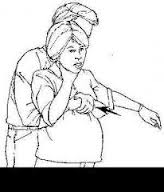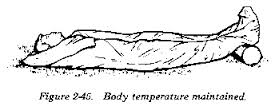I received an email from a caregiver who was asking if I could do a bit more training on the care of a 15 month old with a trach. I did find a couple videos that were pretty good for cleaning and changing a tracheostomy tube but not really how to deal with ventilation assistance. I thought I’d at least take a few video bytes and maybe add some tips and thoughts about what to do if you have O2, bag valve mask and a suction unit. Hope it helps.
Category Archives: Roy on Rescue
Why the phrase “Not Breathing Normally?”
I saw a comment come in this morning from our training feedback report that read, “in your trainings, why do you say, ‘not breathing normally’ instead of ‘not breathing,’ period, for starting CPR?” I thought this was a valid question and so I thought I’d try to reply with a valid answer! The following is my reply to their question. I hope it helps.

Back To Business Summer Update
Hello Rescue Fans!
I wanted to get a video update out before the long Holiday weekend. I’ve had an incredibly busy summer but am excited to get the RoyOnRescue series updated and back on track. Make sure you reach out to me with questions and comments using email and twitter.
Have a great Holiday!
Roy
What If The Person Is Choking and Is Pregnant?
Hi Rescue Fans!
Got a good question via email today regarding the choking adult scenario. This rescuer asked if we could explain the following: “Please talk about how to give a pregnant woman chest compressions if she was choking. How would we hold her? With an infant we make sure the head is below the body. But what to do for a pregnant woman who is choking? -H____
I thought this was a good question and one that we cover in our CPR certification course. Feel free to view it below. At about 44 seconds into the training, I talk about what to do if the person has a distended abdomen that’s too large to reach around, or they are a pregnant person. I hope this helps!
Why Do We Cover A Patient In Shock?
Hello Rescue Fans!
In this unedited video, I talk about and explain why we cover a patient who may be showing signs of shock after this question came in by ema il. Remember, it’s important to help the patient feel comfortable, cared for, and safe as best as possible. But physiologically speaking…keeping the patient warm helps prevent hypothermia “which shifts the oxyhemoglobin dissociation curve to the left, impairs oxygen delivery, and exacerbates the shock state.”(http://www.ebmedicine.net/topics.php?paction=showTopicSeg&topic_id=110&seg_id=2113) And in the end, the fact that the person feels well cared for can help them become less anxious and do better through the traumatic event. Hope this helps.
il. Remember, it’s important to help the patient feel comfortable, cared for, and safe as best as possible. But physiologically speaking…keeping the patient warm helps prevent hypothermia “which shifts the oxyhemoglobin dissociation curve to the left, impairs oxygen delivery, and exacerbates the shock state.”(http://www.ebmedicine.net/topics.php?paction=showTopicSeg&topic_id=110&seg_id=2113) And in the end, the fact that the person feels well cared for can help them become less anxious and do better through the traumatic event. Hope this helps.
Can I Use Adult AED Pads on a Child or Infant?
I received a question via email about using an adult AED on a pediatric patient if there were no pediatric AED pads available. The quick answer? Yes, you can. Remember, many newer AED’s are now attenuated and will usually give as much electricity as needed to accomplish de-fibrillation. If at all possible, use an AED with pediatric pads and place them correctly on the chest and back of the pediatric patient. If no pediatric pads are available, place the adult size AED pads on the front center of chest and in the middle of the child’s back approximately between the shoulder blades to ensure most effective de-fibrillation even with adult AED. In the end, when a person is suffering sudden cardiac arrest, the majority of the time, they are in a some form of de-fibrillatable rythm and an AED is of great benefit, even if the size of the pads don’t match. Ages for the child ranges between 1-8 or first signs of puberty, after that, treat as an adult and if under 1 year of age, treat as an infant. There’s some question as to the effectiveness of de-fibrillation in infants under 1 year. See the above links for more details regarding this subject.
I hope this helps.
Keep On Rescuing!

I Broke My Wrist As A Kid, And Now It’s Starting To Hurt Again! Why?
I got another email from a Rescue Fan that asked about pain in the wrist that has recently become very bad. He had injured the scaphoid bone in his wrist as a teenager, got a cast, took it off prematurely and then just recently began to really feel pain, numbness and discomfort in the same area. I emailed him back and then thought there may be other’s with the same question due to the popularity of this type of injury. Here’s my email back to him. I hope it helps.
I’m sorry to hear that you’re going through so much discomfort. I looked up your injury and though nothing has told me anything you didn’t already know about this type of injury I’m including a video that may help refresh your memory.
In regards to the injury causing more problems. You are always welcome to request a second opinion and may even want to find a good “sports medicine” Ortho Doctor. It could be a number of things causing the pain but one reason is due to the possibility of developing “traumatic arthritis”, it could be Simple immobilization in a cast will not lead to healing of the bone. This scaphoid bone is particularly prone to this for several reasons: there is the possibility of the fracture being missed at the initial injury leading to a delay in treatment; secondly, the bone has a poor blood supply. The fact that it is inside the joint and is constantly being bathed by synovial fluid also contributes to the development of a nonunion. A nonunion, in other words, is a failure on the part of the patient’s bone to complete the healing process. A “false joint” occurs at the nonunion since the ends of the broken scaphoid are attached to ligaments at each end of the bone, further separating the fracture and preventing healing(http://www.arthroscopy.com/sp04013.htm). This can only be verified via thorough investigation by a qualified physician. In the mean time, rest, ice, elevation when possible and maybe even a splint of some sort can help to immobilize while on the way to the doctor to get to the bottom of the issue.
I hope this helps and I hope you’ll let me know what you find out.
Best Wishes,
Roy
What Does An Actual Drowning Look Like And How Do We Help?
As in all accidental deaths, the more we know about how to prevent them, the better off we will all be. In this episode, I answer an email that asked if I could combine training with some more realistic visuals about how a person may actually look when they’re drowning vs. the hollywood melodramatic look. The rescue fan was concerned that many people may not even realize that a drowning victim could be very quiet and not really even yell for help.
I hope this training helps us all have a much safer summer of fun!
Why Wouldn’t Someone Bleed Much After A Traumatic Amputation?
Whoa! I can hardly believe that anyone would dare to question the utter possibility of real people suffering after being affected by an explosion, but they are! I received a comment from a Rescue Fan and they had seen posts and videos put out by someone who claims that the bombing injuries could actually be “mocked” or “fake”. Now, regardless of whether they are or are not, I would like to answer this question regarding the claims that minimize this type of event.
Regardless, it appears that those who are questioning authenticity of the recent bombings and injuries/amputations related to these bombings are due to pictures that show people right after the bombing with little or no visible blood.
Most professionally trained people understand the properties of blood and how amazing our body is. We understand that the body was created in such a way that it reacts to emergency situations in ways that help to slow down the process of shock and death in time to get help and try to recover from the injury or illness. The following is a technical breakdown of how the body reacts to injuries, cuts and amputations and why minimal blood is not a good theory to use when it comes to deciding if a person really suffered an amputation or not.
In short, we must remember that when a vessel is cut and the body sends the signal that an accident has occurred, the body takes action to lose as little blood as possible and conserve it’s life as efficiently as possible. The following is a very good breakdown as to how and why it does. I hope it helps and in the mean time. Let’s be careful about calling every event a hoax even if it is possible. Especially when innocent lives are part of the equation.
Are Hot Dogs Dangerous?
I received an email a couple of weeks ago by a well known television news show. They asked if I could help them with the topic of choking and specifically on hot dogs. I liked the idea and though they didn’t need the training I put together, I thought you all might benefit from it. In producing this training, I found that kids choke 60% of the time on food! Did you also know that of that 60%, 17% of the time it’s a hot dog? I thought it would be helpful for you rescue fans so I thought I’d share it with you. In this episode we discuss why kids choke on hot dogs, how kids choke on hot dogs, how to help prevent kids from choking and what to do if it happens. Get summer safe by catching up on this latest episode of RoyonRescue right now!





